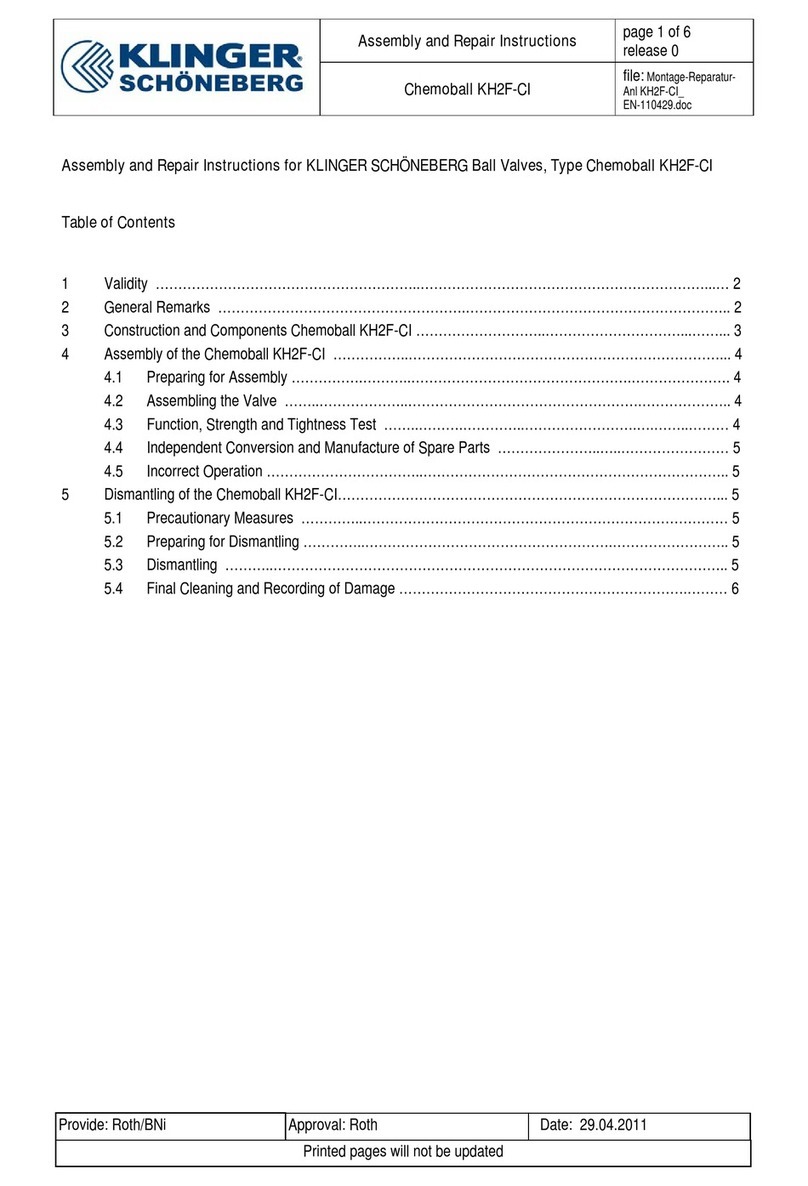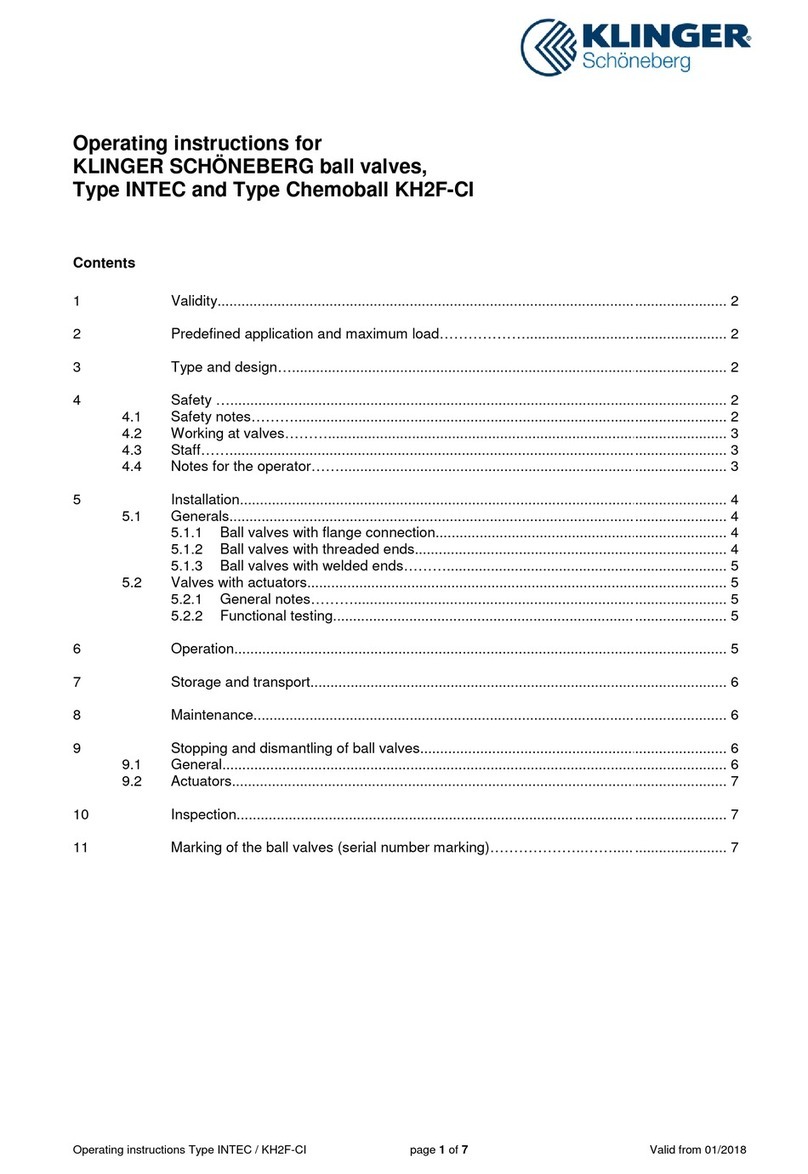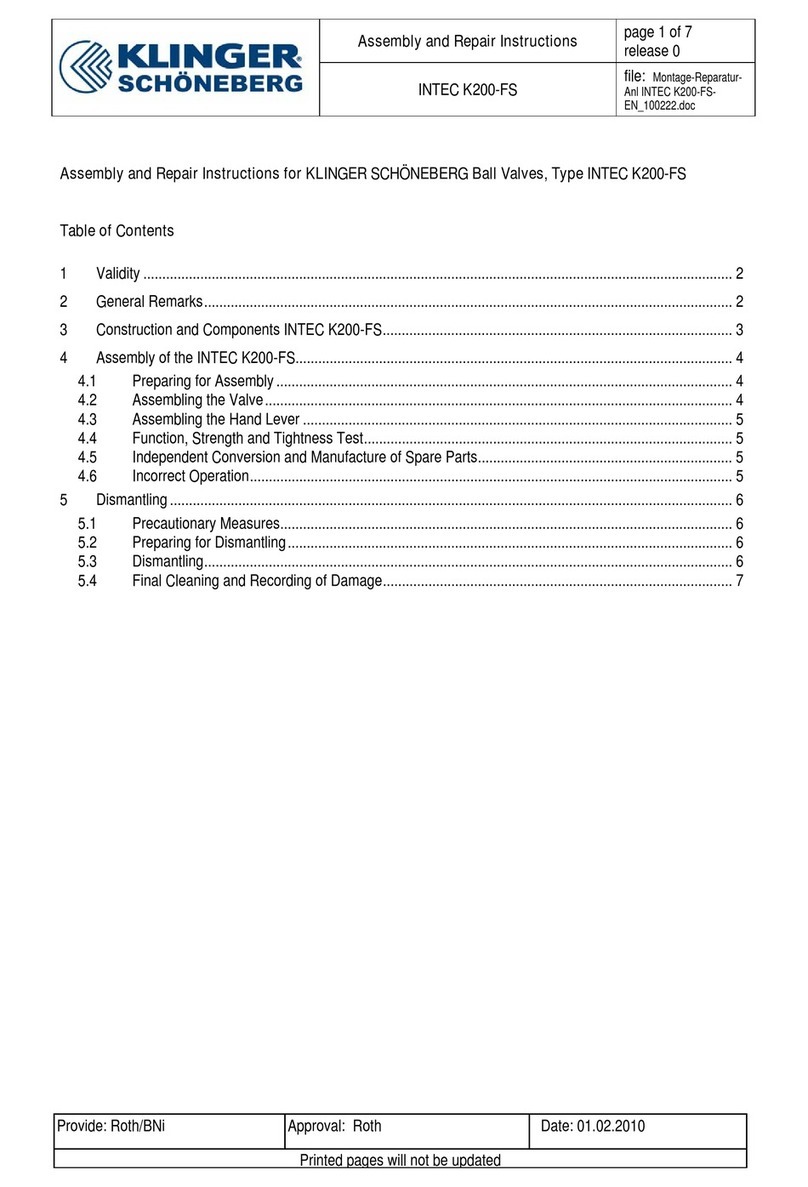
Assembly and Repair Instructions page 5 of 5
release 0
RK-Proball KH 1T M file:
provide: BNi approval:
rinted
a
es will not be u
dated
date: 01.01.2006
5Dismantling of the RK-Proball KH 1T M
5.1 Precautionary Measures
In order to ensure that any product residue which has remained in the cavity of the valve cannot lead to risk to the
staff performing the dismantling operation, appropriate protective clothing made of chemical and solvent resistant
material is to be worn on the entire body and a resistant facial protection.
For reasons of caution dismantling should be performed via a catch tank. Any toxic gases or vapours must be ex-
tracted so that they may not reach personnel. This also applies to the final cleaning after dismantling has been
completed.
The ball valves must be brought into a pressure-free state for the purposes of repair. For this purpose they should
be brought into the semi-open position. It will similarly benecessary to perform cleaning on the inside and outside
before dismantling. It is expedient to switch the ball several times during cleaning of the cavity.
5.2 Preparing for Dismantling
Before dismantling, the body and the parts of the ball valve should be marked so that the assembly positions can
be understood later on.
5.3 Dismantling
•before starting with the dismantling, the ball valve must be closed. Please take note, that no remaining
pressure is on the pipe
•unscrew the nut (6) and remove the handle (10)
•remove the gland ring (8) and the sealing ring (5)
•unscrew the gland nut (4)
•take the ball (3) out of the body (1)
•press the stem (7) from the top into the body (1) and remove it
•remove the stem packing (9)
5.4 Check of the parts
If necessary, all single parts must be cleaned after the dismantling.
Check of the ball: Any defect (scratches, grooves, abrasion, corrosion etc.) at the surface, particularly in the
sealing area can be a cause of leakage. If a fault will be noticed, the ball must be replaced.
Further sealing parts: [ stem packing (9), seat rings (2), sealing rings (5) ]. All these parts must be replaced in
every case. A multiple use of one of these parts is not permitted. Please use always original spare parts.
Stem: After the cleaning, the stem must be checked on rust, particularly in the thread area and must be replaced
if necessary.
Body and its parts: The body and its parts have to be checked on defects at the surface. In doubt cases or when
required, a surface crack test (dye penetration test) is to be carried out. All other parts must be checked on
mechanical damages and to be replaced if necessary.





























